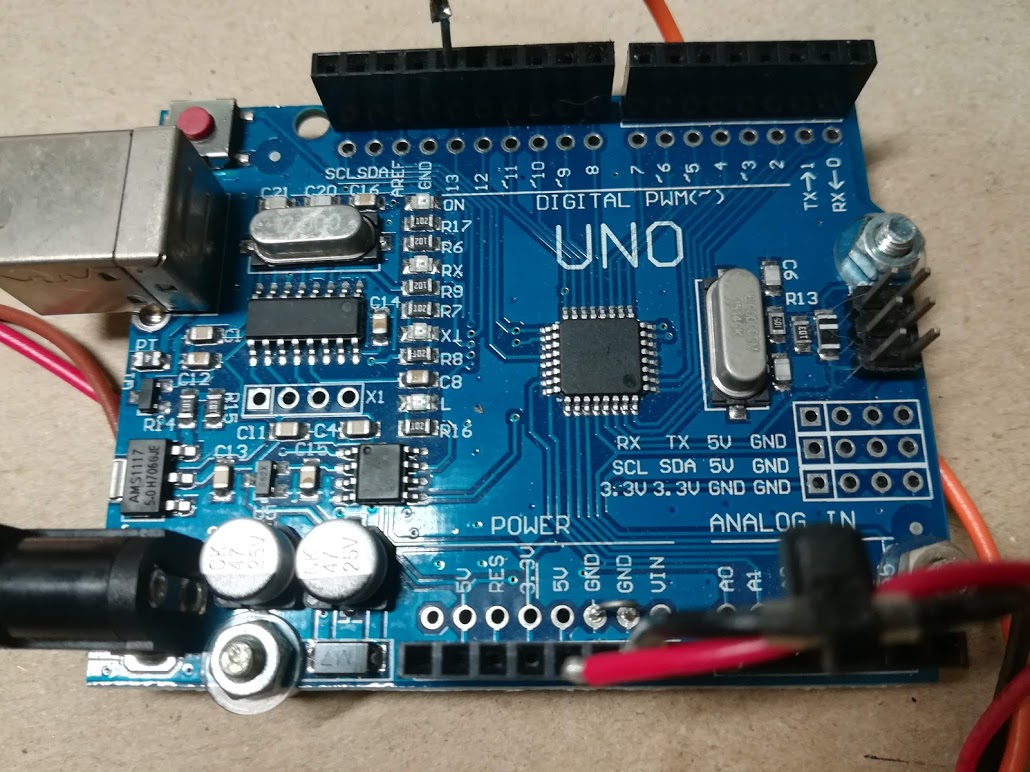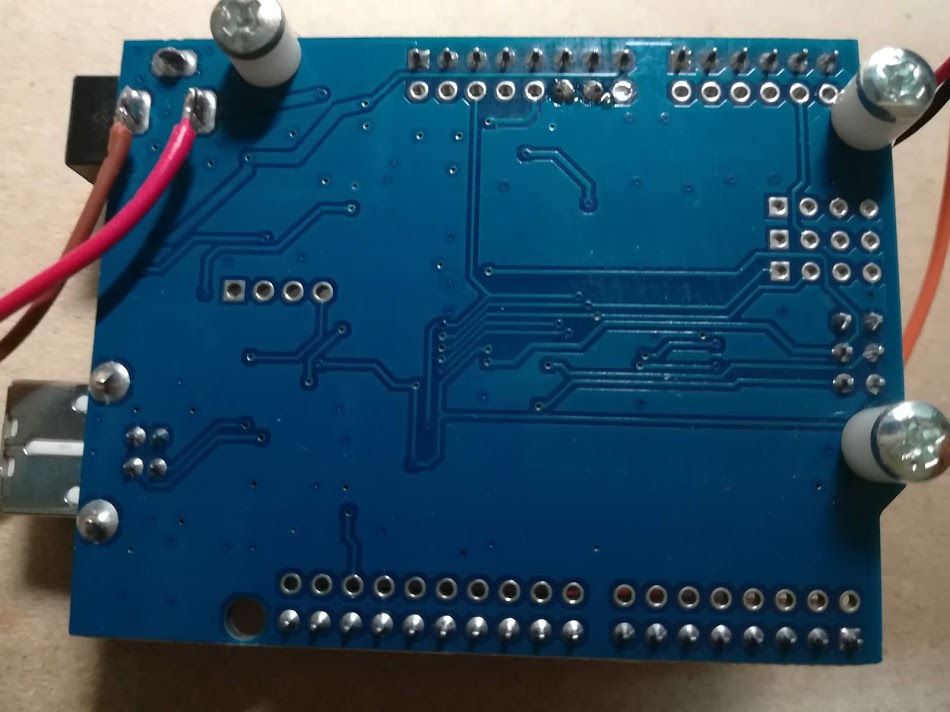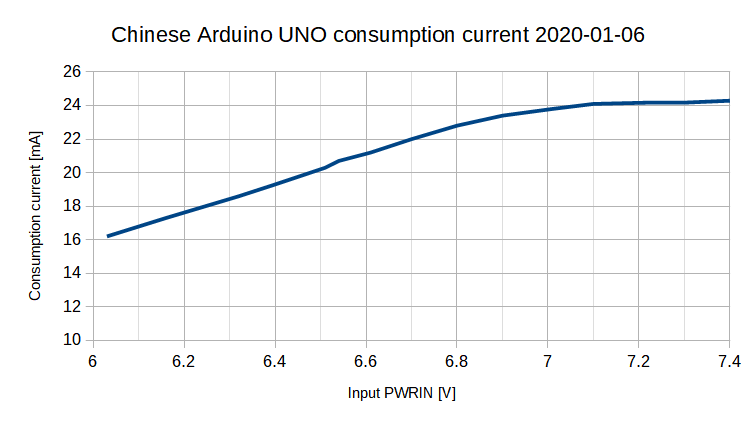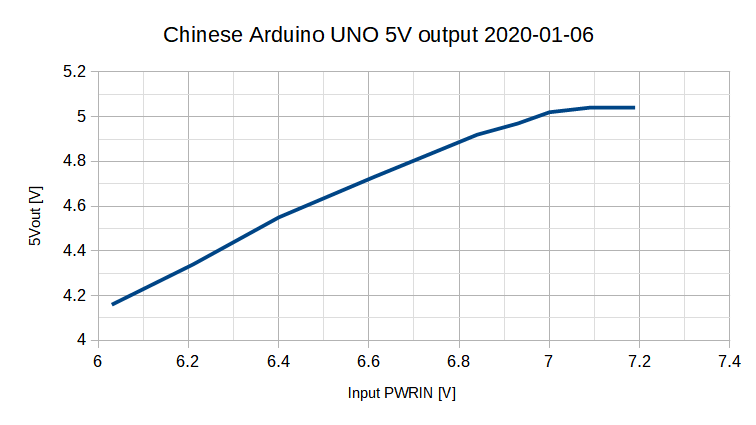Motive
Enoki hopes that batteries driven Chinese Arduino UNO will work a wireless module in a field test. So UNO's consumption current is crucial.
Summary
The output of 5V was 4.16 V, while UNO was running a simple program at PWRIN 6V.
経緯目的
中国製 Arduino UNO をバッテリ駆動により屋外試験に使いたい。そのためには消費電流と動作電圧を確認する必要がある。
要約
PWRIN 6V入力でも簡単なプログラムが動作し,5V出力は 4.16V だった。
Chinese UNO consumption current 2020-01-22
Availability
Enoki had worked the UNO to measure the ranges of wireless modules before.
Although Enoki has a few AVRs and H8, I have to solder the circuit for the field test.
If the consumption current is little, the power supply will be easy.
I found the UNO circuit on the web. I don't know the URL now. You will find it easy as well as I.
Measurement and method
The UNO board has been solder the power line as shown in Photo 2. The wire gauge is AWG 24 (0.2 sq).
Variable Voltage power supply is Enoki's scratch. I connected DMM Sanwa PC510 to the positive line to measure consumption current of the the board.
I measured input voltage and 5V output by DSO Tektronix TDS2002 Measurement Mean, while my tiny program was running. PWRIN was CH1 1 V/div. 5V output was CH2 2 V/div. Time scale was 10 ms/div.
I also confirmed DIO 13 on/off by DSO.


Conclusion
UNO has a regulator to regulate PWRIN to 5V. A linear regulator drops about 2V. But the DIO works even at PWRIN 6V. DIO 13 turned on/off 4.16 V, when PWRIN is 6.03 V.
Although the original Arduino MPU is supplied 5 Vcc, perhaps the Chinese one works at 3.3 Vcc.
I have measured twice. If I measured DIO at the same time, I could get the data once. I should consider experiment plan carefully, even tiny experiment.
The UNO works at 20 mA. If a battery has 600 mAh, it will work for 30h. But dry battery drops output gradually at constant.
Should I adopt a step-up DC-DC converter? At first, I thought a lead battery for motor cycle. But lead battery disposal is troublesome in Japan and more expensive than dry battery.
I confirmed that the UNO has ATMEL MEGA328P. The MPU works 2.7V to 5.5V. Oh, it may work by my 3.3V DC-DC converter.
© enoki.net 2020 January 23

